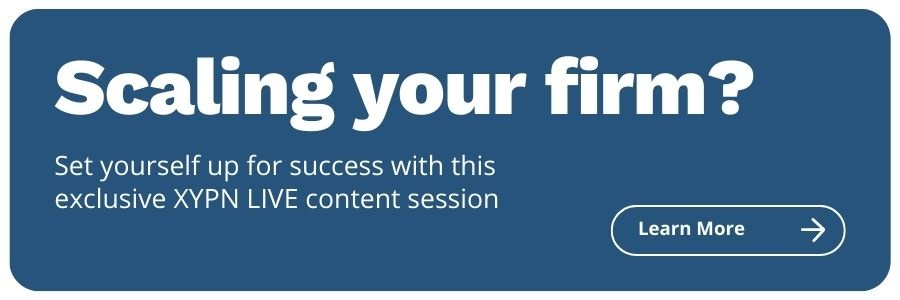The Basics of Continuity Planning - What Would Arlene Say?
Share this
Recently, I attended a financial planning conference where they dramatically unveiled a new Business Continuity Committee. It was all very exciting - and it really got me thinking. How can advisors support each other in times of need?
If you know me at all, you know that continuity planning is a hot button issue for me. I’ve seen situations where it’s gone so well, and others where it’s been a nightmare.
Of course, none of us want to imagine that tragedy will strike. But the old adage is often true - if we hope for the best but prepare for the worst, we’re often better off. I’ve witnessed the aftermath of a sudden advisor death, and the beauty of advisors banding together to support a colleague who was in the midst of battling cancer. These events have made me a strong proponent of continuity planning.
What is Continuity Planning?
To talk about continuity planning, we should probably start at square one: what is it, exactly? Business Continuity Planning (BCP) is essentially the process of creating a strategy that ensures your business carries on in case of disaster. This is especially critical for financial planners who literally are their business.
You have clients who depend on you and you alone - and that means that if the worst case scenario happens, they’ll be left out in the cold. To ensure that this doesn’t happen (and that your loved ones aren’t stuck with the responsibility of sorting out what happens to your business without you), you need a continuity plan.
Who is Continuity Planning For?
Everyone! I repeat: everyone! Continuity planning is not just for the solo-shop advisor who doesn’t have any support staff. A continuity plan is, of course, critical for those people. However, it’s also important for larger firms. In the event that someone in the firm is no longer able to continue working, the team needs support, too.
Nobody deserves to be left in the dark, and you don’t want to wait until it’s way too late to get a plan in place. In fact, you should probably start building a plan for yourself and your firm when things are going well. That way you know you won’t be making decisions from a place of fear, and you will have plenty of time to do a “test run” if necessary in case anything happens down the line.
How Do You Get Started?
Your first step should be to create an outline of the basic information you need for your continuity plan. You’ll need to touch on financial issues for your business operations, client information access, insurance coverage, and more. The list can be quite extensive, but don’t let it overwhelm you. It’s so critical to have all of this information at the ready so you can develop a plan of action in case of emergencies.
You should also have separate lists that will be pertinent based on the kind of emergency you’re facing - short-term, long-term, or permanent disability. For example, the keys to the kingdom being handed over to a trusted colleague for a month or two while you care for an ill parent are much different than if something were to happen to you that would prevent you from working indefinitely.
Define Your Timeframes
It’s wise to have several levels in your continuity plan. A lot of your plan will be dependent on just how long you’ll be away from the practice - so I think it’s wisest to define your “levels” of continuity planning by different timeframes.
For example, “short-term” may be 4-6 weeks. Set a limit for long-term versus permanent disability, as well. Some long-term absences may require you to be away from the practice for a year or more. After what length of time would you be most comfortable following your permanent disability plan?
For each type of contingency, you’ll want to determine the activities that will need to be covered in your absence. For short-term issues, you and those involved in your continuity plan may decide that no compensation is necessary for the saviors who are swooping in to take care of business while you’re away. However, a reasonable compensation might be expected for longer term relationships. This is one reason that having clearly defined time frames for different levels of emergency is so helpful - it can help guide the relationship you have with other advisors or team members who are willing to step up to the plate, as well as the compensation they’ll be provided for their time.
Create Your Templates
Go ahead and draft letters to your clients for both short and long term “leave of absence” scenarios. Whether you become disabled, go through a family emergency, or need to step away from the practice for personal reasons - your clients will want to know where they stand.
Additionally, it doesn’t hurt to have a template ready for whomever will be contacting your clients in the event of permanent disability or death. Take your time with this, and map out a process you (or they) will need to follow. Remember to communicate clearly in both your letter to clients and your instructions to your contingency group. Although it may feel odd, especially since nothing tragic has happened in this moment, you still owe it to them to be direct.
Your client contracts can (and should) explain when their information may be shared. There will need to be different stipulations based on the amount of time you’re absent. Ensure that these bases are covered in all client contracts - and that they’re made aware of them. Nobody likes to be blindsided.
Form a Group
Continuity plans work best in groups. Rather than just partnering up with someone, have a small group of colleagues you trust who get together and are there to help share the burden in the event of an emergency.
While you’re forming your group and nailing down continuity processes, learn as much as you can about one another! Understand how you each deliver planning so that, when the time comes, you can keep things consistent for one another’s clients and be respectful of how everyone’s practice is being run. Of course, no two advisors will deliver planning services in the exact same way. That’s what makes the industry so wonderful - everyone is unique. However, the more familiarity you have with someone’s work style, the easier it will be to step into their shoes in case of an emergency.
A group also allows you the ability to account for a scaling business. Should you need to pass off 100 clients, you can’t expect one firm to seamlessly absorb them while you’re gone. A group allows you to evenly distribute your client pool so that everyone is well taken care of, even in an unfortunate situation.
When to Involve Loved Ones (And When Not To)
A spouse, a close friend, or a relative can have access to pertinent information about your business and your continuity plan to help get things rolling. I usually advise that financial planners create a “high level” packet of information for this person - a list of contacts, a general idea of how each continuity plan works depending on how long your absence will be, etc.
That being said, do NOT expect your next of kin or close friends to BE your contingency plan. Should the worst happen, they will be on the front lines. I’ve seen this happen before - where an advisor becomes injured or passes away suddenly, and their spouse is the one left in charge. That’s putting them in an impossible situation - no matter which way you look at it.
This person should have power of attorney so that they can help to make key decisions about how to move forward with your already-designed continuity plan, but they should in no way be your “fall back.” Their only role should be to hand off their vital information to the colleagues acting in your stead, who will be able to professionally handle your business and client needs. Anything more than that is asking too much, and it decreases the likelihood of a smooth transition.
Find Your Buddy, and Get Going
This isn’t the fun stuff you signed up for when you launched a business. But it needs to get done. Find yourself an accountability partner, and make sure you each tackle the continuity planning steps I’ve listed here - in a timely manner. Your buddy doesn’t have to be the person who takes over for you in the event of an emergency, they’re just there to help you move the process along. Together, you can act as sounding boards as you work through scenarios, and then you can take your contingency coverage to a much larger group.
You, your clients, and even your compliance folks will be happy you took the time to do this. It really is in the best interest of your clients, and your business.
 About Arlene Moss, Executive Coach
About Arlene Moss, Executive Coach
Arlene gets a kick out of helping financial advisors get over being overwhelmed and take on their frustrations so their businesses soar. Arlene works to ensure XYPN members are able to help their clients prosper while creating a sustainable business model. Through XYPN Academy and one-on-one coaching, members get the support they need to grow their businesses and overcome the challenges that come their way.
Share this
- Advisor Blog (690)
- Financial Advisors (219)
- Growing an RIA (99)
- Digital Marketing (86)
- Marketing (83)
- Community (81)
- Start an RIA (75)
- Coaching (72)
- Business Development (70)
- Running an RIA (70)
- Compliance (69)
- Client Acquisition (65)
- Technology (64)
- XYPN LIVE (59)
- Entrepreneurship (56)
- Sales (48)
- Practice Management (44)
- Client Engagement (41)
- XYPN Books (38)
- Bookkeeping (37)
- Investment Management (37)
- Fee-only advisor (34)
- Lifestyle, Family, & Personal Finance (31)
- Employee Engagement (30)
- Client Services (25)
- Financial Education & Resources (24)
- Market Trends (21)
- Journey Makers (20)
- Process (14)
- Niche (11)
- SEO (9)
- Scaling an RIA (8)
- Career Change (7)
- Partnership (6)
- Transitioning Your Business (6)
- Transitioning To Fee-Only (4)
- Social Media (3)
- Transitioning Clients (3)
- Emerald (2)
- Persona (2)
- RIA (2)
- Onboarding (1)
- Sapphire (1)
Subscribe by email
You May Also Like
These Related Stories

Is It Time to Fire a Client? - What Would Arlene Say?
Nov 9, 2017
7 min read

The What, How and Why of Outsourcing - What Would Arlene Say?
Sep 14, 2017
4 min read





